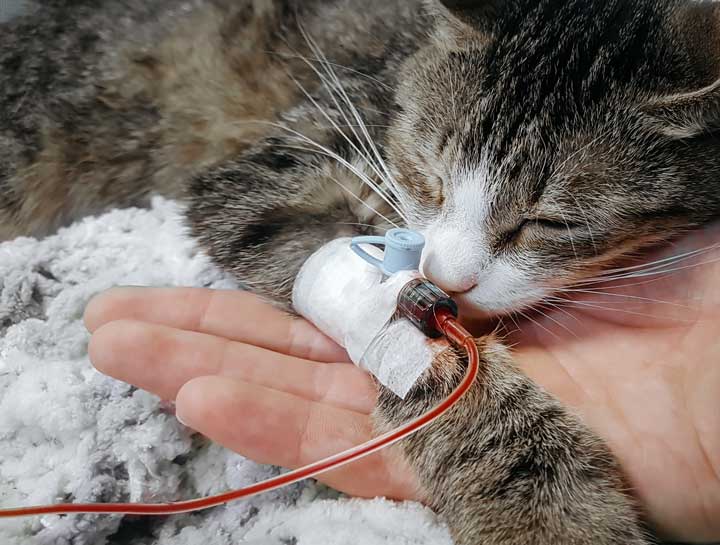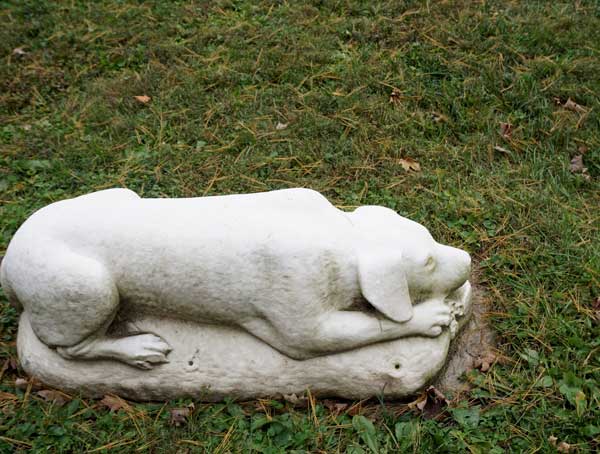FAQs About Hospice Care for Pets

Losing a pet is never easy, but if your pet is in their senior years, or has a terminal diagnosis, hospice care may help make this transition easier and less stressful for you and your pet. Our team at Medina Veterinary Clinic would like to answer some frequently asked questions about hospice care for pets.
Question: What is hospice care for pets?
Answer: Hospice care provides pain relief and an improved quality of life for declining senior pets, and pets affected by a terminal illness. Once the focus switches from trying to cure the problem, to ensuring the pet is as comfortable as possible during their final days, hospice care is their best option. The goal is to provide supportive care that will allow them to spend more time with their family without suffering. Pets in hospice care require an active commitment and sometimes constant supervision.
Q: Is hospice care right for my pet?
A: Hospice care should be considered if your senior pet’s health is declining, or your pet has an incurable medical condition, such as cancer, kidney or liver failure, progressive neurological conditions, and severe uncontrolled arthritis. If you aren’t ready for your pet to be euthanized, and they are not suffering, hospice care is a good option.
Q: How can I tell if my pet’s quality of life is poor?
A: To assess your pet’s quality of life, the HHHHHMM scale can evaluate several factors, including:
- Hurt — Is your pet in pain, or are they having difficulty breathing?
- Hunger — Is your pet eating enough? Do they eat better if you hand feed them? Do they require a feeding tube?
- Hydration — Is your pet drinking enough water? Do they require subcutaneous fluids to stay hydrated?
- Hygiene — Does your pet groom themselves normally? Do they require extra attention to ensure they are clean, especially after elimination?
- Happiness — Does your pet express joy and interest? Are they responsive to family members, toys, and other animals? Are they depressed, anxious, or afraid?
- Mobility — Can your pet move without assistance? Do they enjoy going for walks? Are they experiencing incoordination or seizures?
- More good days than bad — Does your pet have more good days than bad, about the same, or more bad days than good?
Each value is scored from 0 to 10, where 10 is ideal. A total higher than 35 points represents that hospice care is acceptable for their quality of life.
Q: How do I know if my pet is in pain?
A: Your painful pet may exhibit signs that include:
- Changes in normal eating and drinking habits
- Changes in sleeping habits
- Panting
- Hiding
- Trouble moving, or reluctance to move
- Increased vocalization
- Shaking or trembling
- Aggressive behavior
Q: How will I know how to provide hospice care to my pet?
A: Each pet’s case is unique, and they will need an individualized plan to ensure their needs are met. Our veterinary professionals at Medina Veterinary Clinic will work closely with you to determine your pet’s best plan. We will educate you on caring appropriately for your pet, and we will keep in close communication, so we can change the plan as your pet’s condition changes. Hospice care for your pet may include:
- Pain recognition and treatment — If your pet is in pain, options to alleviate their discomfort include prescription and over-the-counter pain medications, dietary supplements, and physical therapy options.
- Subcutaneous fluids — Some pets require subcutaneous fluids to stay adequately hydrated. Most pets accept this procedure, and our team will demonstrate how to best accomplish this task.
- Supplementary nutrition — Some pets may have difficulty maintaining their weight, and may need supplemental nutrition. Some pets eat better when hand fed, and some require a feeding tube to receive adequate nutrition.
- Incontinence management — You may need to assist your pet to relieve themselves in the appropriate place. You will also need to keep their coat as clean and dry as possible after accidents.
- Bandage and wound care — Our team will instruct you on how best to bandage and care for your pet’s wounds, if needed.
Q: How do I know when my pet is ready to be euthanized?
A: The decision to euthanize your pet is extremely difficult, but this procedure can relieve your pet’s suffering. Monitor your pet’s condition frequently, using the HHHHHMM scale. When they are having more bad days than good, you should be prepared that the end is near. Our veterinary professionals can help you make this difficult decision.
Q: How can I cope with my pet’s death?

A: Grieving your pet is normal, but you should reach out for support during this difficult time. Memorializing your pet may help you cope with their loss. If your grief persists, or prevents you from performing normal activities, talk to your physician about your feelings.
Hospice care is a good option that allows you and your pet to spend more time together, and provides them with dignity in their remaining days. If you think your pet is a good candidate for hospice care, do not hesitate to contact our team at Medina Veterinary Clinic. We can help ensure their last days are peaceful and pain free.
By Medina Veterinary Clinic | October 7th, 2021
